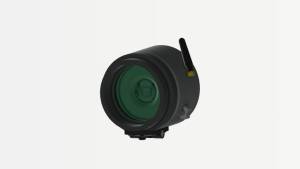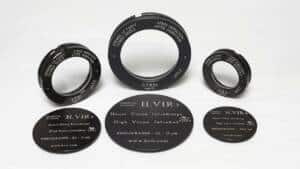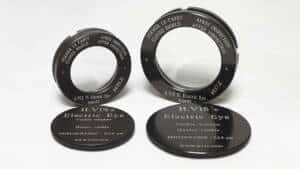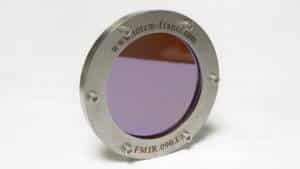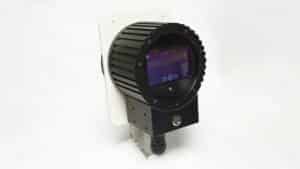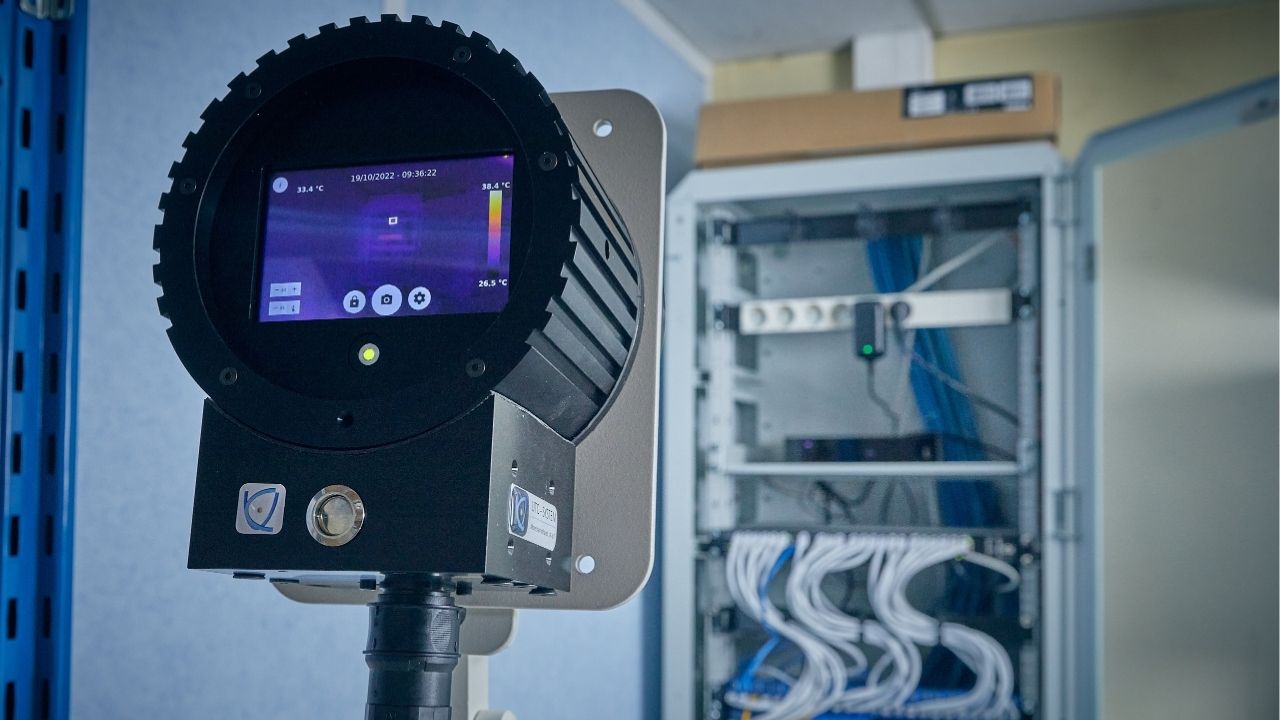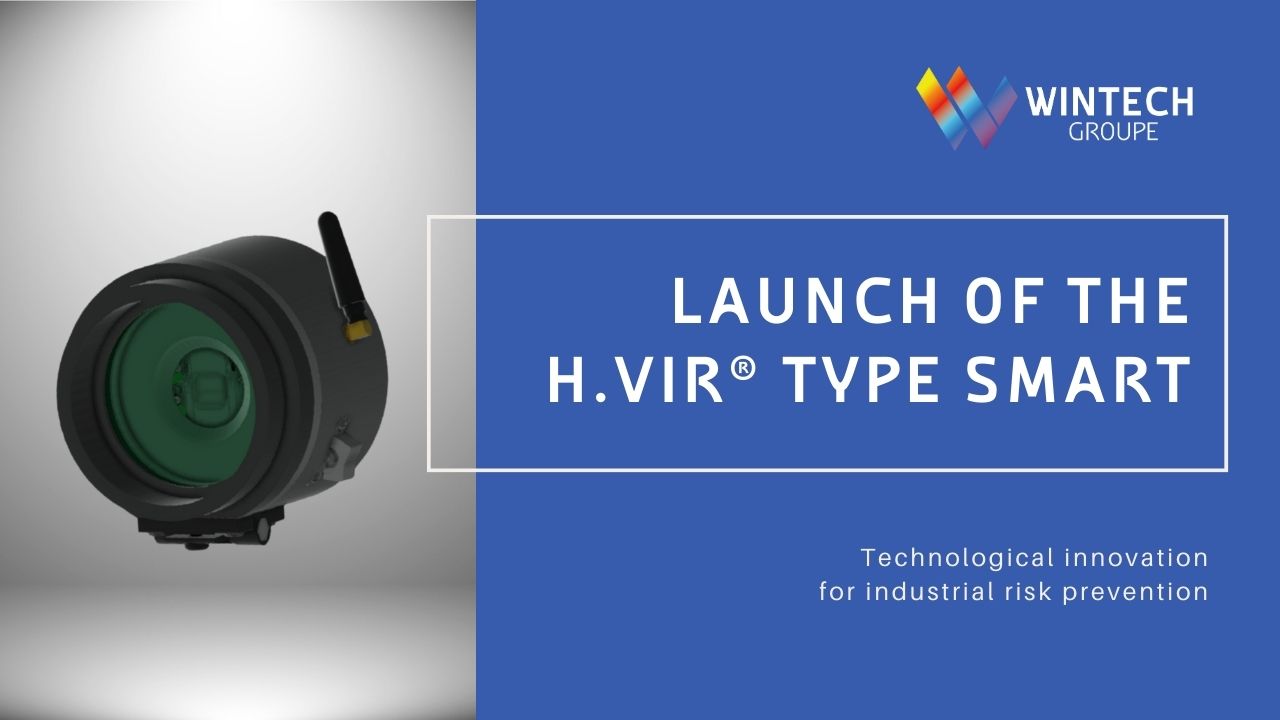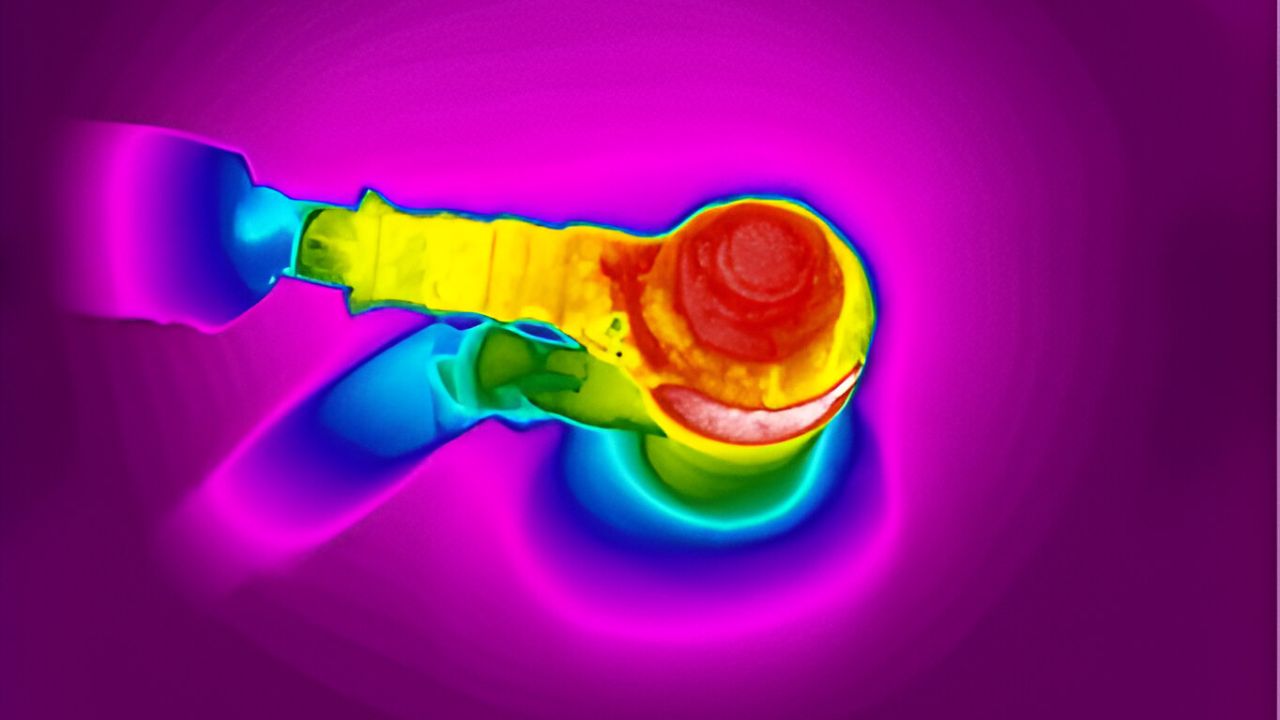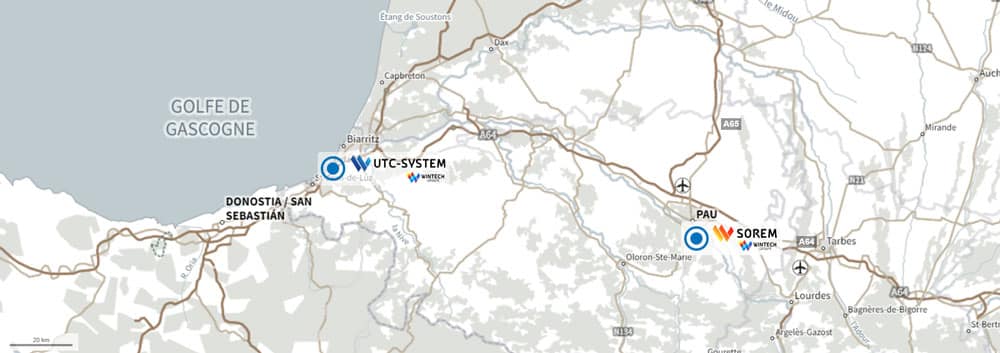The advantages of continuous and autonomous thermographic monitoring of electrical equipment
The maintenance of electrical equipment is based on the use of infrared cameras and the expertise of a thermographer. While it is an essential tool in risk management strategy, it only allows analysis at the specific moment in time – when an inspection happens. Imagine a device that operates continuously and completely autonomously, allowing uninterrupted monitoring of electrical equipment. This system exists, it is the UTC-SD.
The UTC-SD, an innovation in efficient fire prevention
Based on the principle of infrared detection of heat emissions, the UTC-SD is a compact thermal camera that enables continuous monitoring of electrical equipment. This intelligent and connected device combines the technology of the H.VIR® window with that of a thermographic camera. Thus, it can be installed directly on electrical equipment (new or retrofitted) for 24/7 hot spot monitoring.
Using detection and compensation algorithms, UTC-SD is set to trigger alerts when an anomaly appears. It is a decision-making tool that can help take the most appropriate action: accentuation of monitoring via a new alert threshold, planning of maintenance or immediate intervention by a technician.
Reduce the costs of preventive maintenance
The annual maintenance of electrical equipment is a legal obligation for companies. But is an annual inspection sufficient to assure the safety manager or company owner that the fire risks are under optimal control? Is it a guarantee of cost control? No. In the event of the detection of suspicious heating during annual maintenance, it will be necessary to reschedule maintenance or several follow-up inspections to monitor the evolution of the identified anomaly. If you use infrared window technology for inspections, you won’t have to interrupt your production lines.
With the continuous and autonomous monitoring of electrical equipment, you benefit from daily monitoring of connections. By setting a minimum alert threshold, you are informed of the emergence of a hot spot (before it becomes critical) and can place it under surveillance to assess its progress, and trigger maintenance when relevant.
In addition, the monitoring and analysis of the anomaly, at this early stage, does not require a physical visit by a thermographer. Thanks to its monitoring system, the UTC-SD produces photos (thermograms), which can be directly transmitted to a technician for analysis and opinion. The UTC-SD allows you to optimize and reduce your maintenance cycles by determining the most appropriate time for an intervention.
→ Recommended article: How to Reduce the Costs of Annual Maintenance of Electrical Equipment?
Improve equipment reliability and longevity
It is a fact: the operation of tightening and loosening connections, during maintenance, contributes to the embrittlement and premature aging of electrical equipment. Using the UTC-SD can solve this problem.
Monitoring software is installed on the UTC-SD. The constant monitoring of equipment makes it possible to measure the behavior of connections and to detect signs of aging. You may notice repeated or over-heating for example. This gives you valuable information about the safety and reliability of the equipment. In addition, by detecting heating at an early stage, you limit the risk of major damage that can lead to the replacement of the monitored equipment. UTC-SD monitoring thus actively contributes to proactive electrical equipment management.
Detect anomalies at an early stage and alert in the event of a fire outbreak
The occurrence of a fire is a major risk for a company. This risk is also clearly identified by insurance companies, which strongly recommend the use of preventive infrared maintenance. The challenge of monitoring electrical equipment is based on its consistency to leave no room for the unexpected.
The objective is to be able to anticipate the risk of fire by identifying an early anomaly or an anomaly in the making. By setting a temperature measurement threshold, you decide to detect a hot spot in its first stage. This is absolutely crucial to optimize risk management. Once the hot spot has been detected, continuous monitoring allows you to stay “alert” and attentive to the evolution of the anomaly before it triggers a serious accident such as a fire.
At the same time, the stand-alone UTC-SD thermal camera is programmed to trigger alarms. Two types can be distinguished: the general alarm and the local alarm.
The general alarm consists of setting a “minimum” threshold for temperature measurement. This threshold should not be critical since the objective is to create a warning. When the connectors show a slight rise in temperature, you are immediately notified by UTC-SD, which sends an image of the measured “scene”. You can then start targeted monitoring and define and program the corrective actions to be implemented.
The local alarm intervenes in the event of sudden heating of a connector. It is based on the sound triggering of a signal (evacuation required) accompanied by the sending of an “alert” by phone and/or email. Informed as soon as the incident occurs, you can immediately trigger the expected actions and proceed to secure the premises.
→ Learn more about UTC-SD technology, its features, and installation process on electrical equipment.
Real-time monitoring of electrical equipment is possible thanks to UTC-SD. This detector contributes significantly to the optimization of fire risk management by companies by allowing corrective actions to be triggered before an incident occurs.
The maintenance of electrical equipment is based on the use of infrared cameras and the expertise of a thermographer. While it is an essential tool in risk management strategy, it only allows analysis at the specific moment in time – when an inspection happens. Imagine a device that operates continuously and completely autonomously, allowing uninterrupted monitoring of electrical equipment. This system exists, it is the UTC-SD.
The UTC-SD, an innovation in efficient fire prevention
Based on the principle of infrared detection of heat emissions, the UTC-SD is a compact thermal camera that enables continuous monitoring of electrical equipment. This intelligent and connected device combines the technology of the H.VIR® window with that of a thermographic camera. Thus, it can be installed directly on electrical equipment (new or retrofitted) for 24/7 hot spot monitoring.
Using detection and compensation algorithms, UTC-SD is set to trigger alerts when an anomaly appears. It is a decision-making tool that can help take the most appropriate action: accentuation of monitoring via a new alert threshold, planning of maintenance or immediate intervention by a technician.
Reduce the costs of preventive maintenance
The annual maintenance of electrical equipment is a legal obligation for companies. But is an annual inspection sufficient to assure the safety manager or company owner that the fire risks are under optimal control? Is it a guarantee of cost control? No. In the event of the detection of suspicious heating during annual maintenance, it will be necessary to reschedule maintenance or several follow-up inspections to monitor the evolution of the identified anomaly. If you use infrared window technology for inspections, you won’t have to interrupt your production lines.
With the continuous and autonomous monitoring of electrical equipment, you benefit from daily monitoring of connections. By setting a minimum alert threshold, you are informed of the emergence of a hot spot (before it becomes critical) and can place it under surveillance to assess its progress, and trigger maintenance when relevant.
In addition, the monitoring and analysis of the anomaly, at this early stage, does not require a physical visit by a thermographer. Thanks to its monitoring system, the UTC-SD produces photos (thermograms), which can be directly transmitted to a technician for analysis and opinion. The UTC-SD allows you to optimize and reduce your maintenance cycles by determining the most appropriate time for an intervention.
→ Recommended article: How to Reduce the Costs of Annual Maintenance of Electrical Equipment?
Improve equipment reliability and longevity
It is a fact: the operation of tightening and loosening connections, during maintenance, contributes to the embrittlement and premature aging of electrical equipment. Using the UTC-SD can solve this problem.
Monitoring software is installed on the UTC-SD. The constant monitoring of equipment makes it possible to measure the behavior of connections and to detect signs of aging. You may notice repeated or over-heating for example. This gives you valuable information about the safety and reliability of the equipment. In addition, by detecting heating at an early stage, you limit the risk of major damage that can lead to the replacement of the monitored equipment. UTC-SD monitoring thus actively contributes to proactive electrical equipment management.
Detect anomalies at an early stage and alert in the event of a fire outbreak
The occurrence of a fire is a major risk for a company. This risk is also clearly identified by insurance companies, which strongly recommend the use of preventive infrared maintenance. The challenge of monitoring electrical equipment is based on its consistency to leave no room for the unexpected.
The objective is to be able to anticipate the risk of fire by identifying an early anomaly or an anomaly in the making. By setting a temperature measurement threshold, you decide to detect a hot spot in its first stage. This is absolutely crucial to optimize risk management. Once the hot spot has been detected, continuous monitoring allows you to stay “alert” and attentive to the evolution of the anomaly before it triggers a serious accident such as a fire.
At the same time, the stand-alone UTC-SD thermal camera is programmed to trigger alarms. Two types can be distinguished: the general alarm and the local alarm.
The general alarm consists of setting a “minimum” threshold for temperature measurement. This threshold should not be critical since the objective is to create a warning. When the connectors show a slight rise in temperature, you are immediately notified by UTC-SD, which sends an image of the measured “scene”. You can then start targeted monitoring and define and program the corrective actions to be implemented.
The local alarm intervenes in the event of sudden heating of a connector. It is based on the sound triggering of a signal (evacuation required) accompanied by the sending of an “alert” by phone and/or email. Informed as soon as the incident occurs, you can immediately trigger the expected actions and proceed to secure the premises.
→ Learn more about UTC-SD technology, its features, and installation process on electrical equipment.
Real-time monitoring of electrical equipment is possible thanks to UTC-SD. This detector contributes significantly to the optimization of fire risk management by companies by allowing corrective actions to be triggered before an incident occurs.


